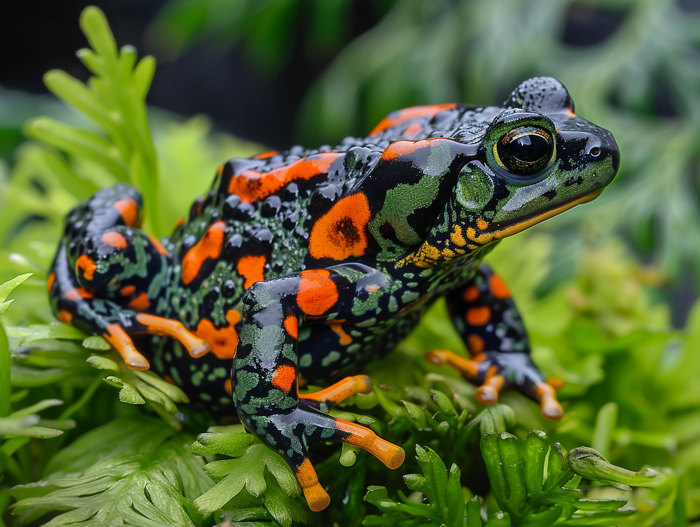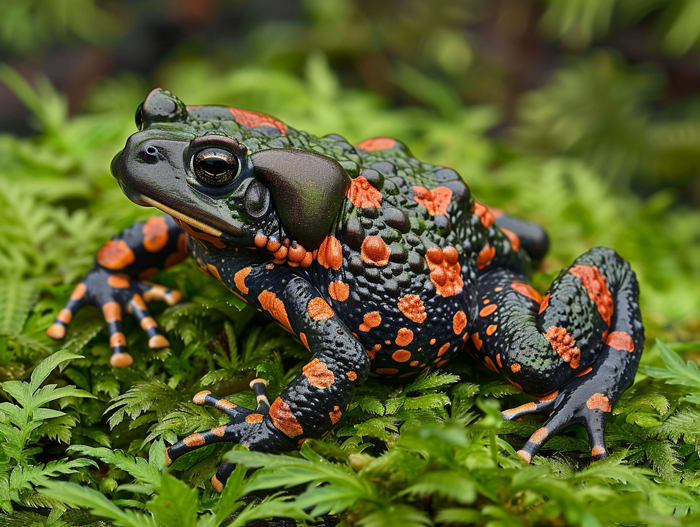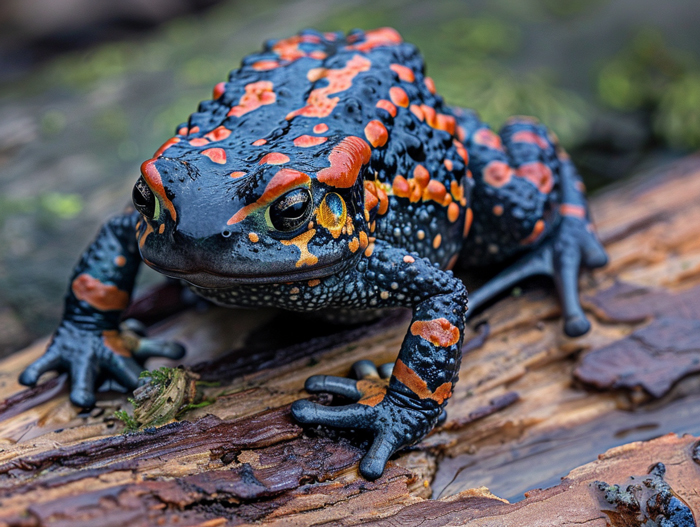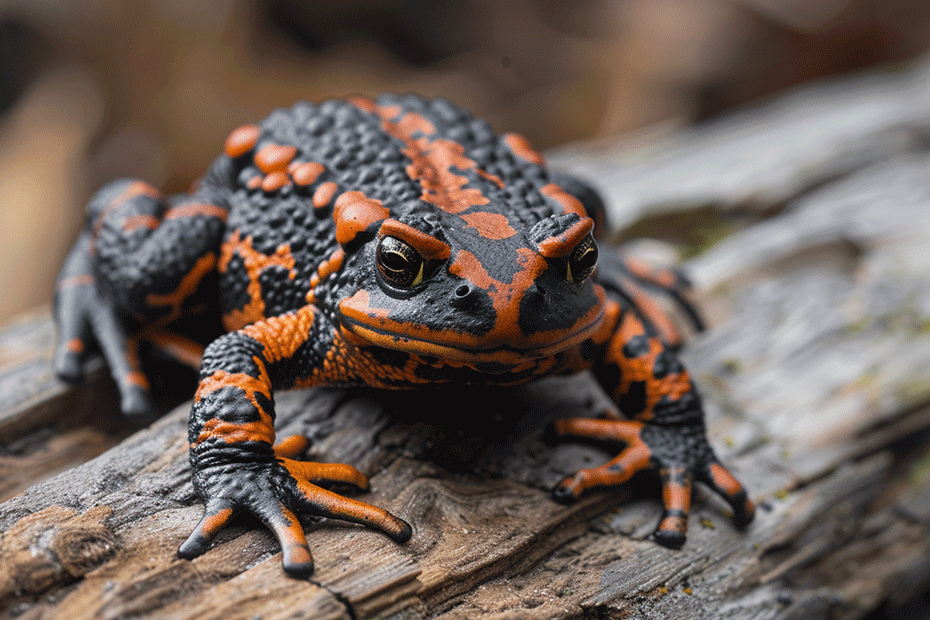Are you curious about what fire belly toads eat? These fascinating amphibians have specific dietary needs that are essential for their health and well-being. Understanding their natural diet can help you provide the best care for your pet fire belly toad.
Fire belly toads are omnivores, which means they enjoy a varied diet of both plant matter and small insects. In the wild, they feed on a combination of insects, worms, snails, and vegetation. Providing a balanced diet that mimics their natural food sources is crucial for keeping your fire belly toad healthy and happy.
In this text, we’ll explore the dietary requirements of fire belly toads in more detail, including the types of insects, plants, and supplements that are ideal for their nutrition. By the end, you’ll have a clear understanding of what to feed your fire belly toad to ensure they thrive in their habitat.
Key Takeaways
- Fire belly toads are omnivores, consuming a diet that includes both plant matter and small insects.
- Providing a balanced diet that mimics their natural food sources is crucial for the health and well-being of fire belly toads.
- Ideal insects for fire belly toads include crickets, fruit flies, mealworms, and small silkworms, gut-loaded and dusted with calcium supplements.
- Leafy greens like collard greens and dandelion leaves, along with essential calcium and vitamin supplements, are beneficial for fire belly toads.
- Feed fire belly toads 2-3 times a week with appropriately sized meals, rotating between insects and plants to offer a diverse diet.
- Tailor feeding frequency based on the age and needs of your fire belly toads to support their vitality and ensure their well-being in captivity.
Overview of Fire Belly Toads’ Diet

When it comes to Fire Belly Toads’ diet, it’s crucial to understand their natural feeding habits for optimal health and well-being. Here’s an insightful overview to help you cater to their dietary needs effectively:
What Do Fire Belly Toads Eat?
- Fire Belly Toads are omnivores, meaning they consume a varied diet consisting of both plant matter and small insects in the wild.
- In captivity, replicating their natural diet is essential to ensure their nutritional requirements are met adequately.
- Providing a balanced diet is key to keeping these amphibians healthy and thriving in their environment.
Ideal Insects for Fire Belly Toads
- Crickets, fruit flies, mealworms, and small silkworms are excellent choices for their insect protein intake.
- Ensure insects are appropriately sized, gut-loaded, and dusted with calcium supplements to enhance nutritional value.

Beneficial Plants and Supplements
- Leafy greens such as collard greens and dandelion leaves are great plant options for Fire Belly Toads.
- Calcium supplements are vital to prevent metabolic bone disease in these amphibians.
- Vitamin supplements like Vitamin D3 can also be beneficial when provided in moderation.
Mealtime Frequency and Variety
- Feed your Fire Belly Toads 2-3 times a week with appropriately sized meals to prevent overfeeding.
- Rotate between insects and plants to provide a diverse and enriching diet for your amphibian companions.
By understanding the dietary needs of Fire Belly Toads and providing a well-rounded diet rich in protein, nutrients, and supplements, you can ensure their health and happiness in captivity. Remember, a balanced diet is the key to revealing your Fire Belly Toads’ vitality and longevity.
Types of Food Fire Belly Toads Eat

Live Insects
Fire Belly Toads primarily consume Live Insects as a key part of their diet. These small amphibians thrive on a diet rich in protein, and live insects provide essential nutrients for their growth and overall well-being.
Common live insects Fire Belly Toads eat include:
- Crickets
- Mealworms
- Waxworms
- Fruit flies
Introducing a variety of live insects helps ensure a balanced diet for your Fire Belly Toads, promoting their health and vitality.
Plants and Vegetation
Plants and Vegetation also play a crucial role in the diet of Fire Belly Toads. While live insects are their primary food source, including plants and vegetation in their diet can offer additional nutrients and enrichment.
- Water lettuce
- Duckweed
- Water hyacinth
Incorporating a mix of live insects and plant-based foods into their diet can help mimic their natural feeding patterns, supporting their overall health and longevity.
Feeding Frequency for Fire Belly Toads

When it comes to nourishing your vibrant Fire Belly Toads, establishing an appropriate feeding frequency is paramount for their well-being. Here’s what you need to consider:
- Young Fire Belly Toads – Feed them daily, offering a variety of live insects to support their growth and development.
- Adult Fire Belly Toads – Adjust their feeding schedule to every other day to maintain their health and weight.
- Monitoring – Keep an eye on their body condition to ensure they are neither underweight nor overweight, making adjustments as necessary.
- Special Considerations – During winter months or hibernation periods, reduce feeding frequency to accommodate their decreased activity levels.
By adhering to a consistent feeding schedule tailored to the age and needs of your Fire Belly Toads, you can support their vitality and ensure they thrive in their captive environment.
Conclusion
Ensuring the optimal feeding frequency for your Fire Belly Toads is key to their overall health and well-being. By adjusting their diet based on their age and specific needs, you can support their growth and maintain a healthy weight. Monitoring their body condition regularly is essential to prevent any potential health issues. Remember to vary their diet with a selection of live insects to provide essential nutrients. By following a customized feeding schedule, you can help your Fire Belly Toads thrive and lead a happy life in captivity.

Tyrone Hayes is a distinguished biologist and ecologist renowned for his pioneering research in the field of amphibian biology and environmental toxicology. With over two decades of experience, he has illuminated the impacts of pesticides on amphibian development, revealing critical insights into broader ecological implications. Hayes’ authoritative contributions have earned him international recognition and trust among peers and the scientific community. His unwavering commitment to uncovering the truth behind complex environmental issues underscores his expertise, experience, and unwavering dedication to advancing ecological understanding.
